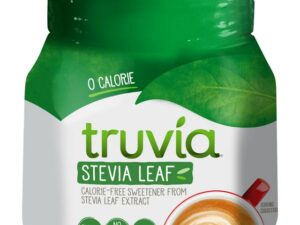Description
Sodium Chloride: More Than Just Table Salt
Sodium chloride, more commonly known as table salt, is a ubiquitous compound found in virtually every aspect of our lives. From seasoning our food to playing a vital role in numerous industrial processes, sodium chloride’s impact is far-reaching and often taken for granted. But what is it exactly, and why is it so important?
A Chemical Compound and its Formation:
Sodium chloride is an ionic compound with the chemical formula NaCl, representing a 1:1 ratio of sodium (Na+) and chloride (Cl-) ions. It forms through a simple, yet powerful, chemical reaction between sodium, a highly reactive metal, and chlorine, a toxic and corrosive gas. These two elements readily react, transferring an electron from the sodium atom to the chlorine atom. This electron transfer creates positively charged sodium ions and negatively charged chloride ions, which are then attracted to each other through electrostatic forces, forming a strong ionic bond and crystallizing into the familiar white substance we call salt.
Sources of Sodium Chloride:
Sodium chloride is abundant in nature, found in two primary sources:
- Seawater: The ocean is a vast reservoir of dissolved salts, with sodium chloride making up the majority. Salt is extracted from seawater through solar evaporation in salt ponds, a process that has been used for centuries.
- Halite Deposits (Rock Salt): Over geological time, ancient seas evaporated and left behind massive deposits of halite, also known as rock salt. These deposits are mined either by traditional methods or by solution mining, where water is pumped into the underground deposit to dissolve the salt, which is then extracted as brine.
Uses and Applications:
The versatility of sodium chloride is remarkable, spanning numerous industries and applications:
- Food and Seasoning: The most well-known use is as a seasoning and preservative in food. Salt enhances flavor, balances sweetness, and inhibits the growth of microorganisms, extending shelf life.
- Preservation: Salt has been used for centuries to preserve food. It works by drawing water out of microorganisms, preventing them from reproducing and spoiling the food.
- Chemical Industry: Sodium chloride is a crucial raw material for the production of numerous chemicals, including chlorine gas, sodium hydroxide (caustic soda), and hydrochloric acid. These chemicals are used in a wide range of applications, from manufacturing plastics and paper to water treatment.
- Road De-icing: In colder climates, salt is used to de-ice roads and sidewalks. It lowers the freezing point of water, preventing ice from forming or melting existing ice.
- Medical Applications: Sodium chloride solutions are used in intravenous drips to replenish fluids and electrolytes in patients. Saline solutions are also used for wound cleaning and nasal irrigation.
- Household Uses: Beyond cooking, salt can be used for a variety of household tasks, such as cleaning, stain removal, and even unclogging drains.
Sodium Chloride and Human Health:
While essential for many bodily functions, including nerve impulse transmission and fluid balance, excessive sodium chloride intake can be detrimental to health. High sodium consumption is linked to increased blood pressure, which can increase the risk of heart disease, stroke, and kidney problems.
Moderation is Key:
Dietary guidelines generally recommend limiting sodium intake to around 2,300 milligrams per day. Being mindful of sodium content in processed foods and restaurant meals is crucial for maintaining a healthy sodium intake. Choosing fresh, whole foods and limiting the use of salt in cooking can significantly reduce overall sodium consumption.
Conclusion:
Sodium chloride is a fundamental compound with a diverse range of applications. From seasoning our meals to supporting critical industrial processes, its impact on our lives is undeniable. Understanding its properties, sources, and uses allows us to appreciate its importance while also being mindful of its potential health implications. While enjoying its ability to enhance flavor and preserve food, moderation and awareness of sodium content are essential for maintaining a healthy lifestyle.












Reviews
There are no reviews yet.